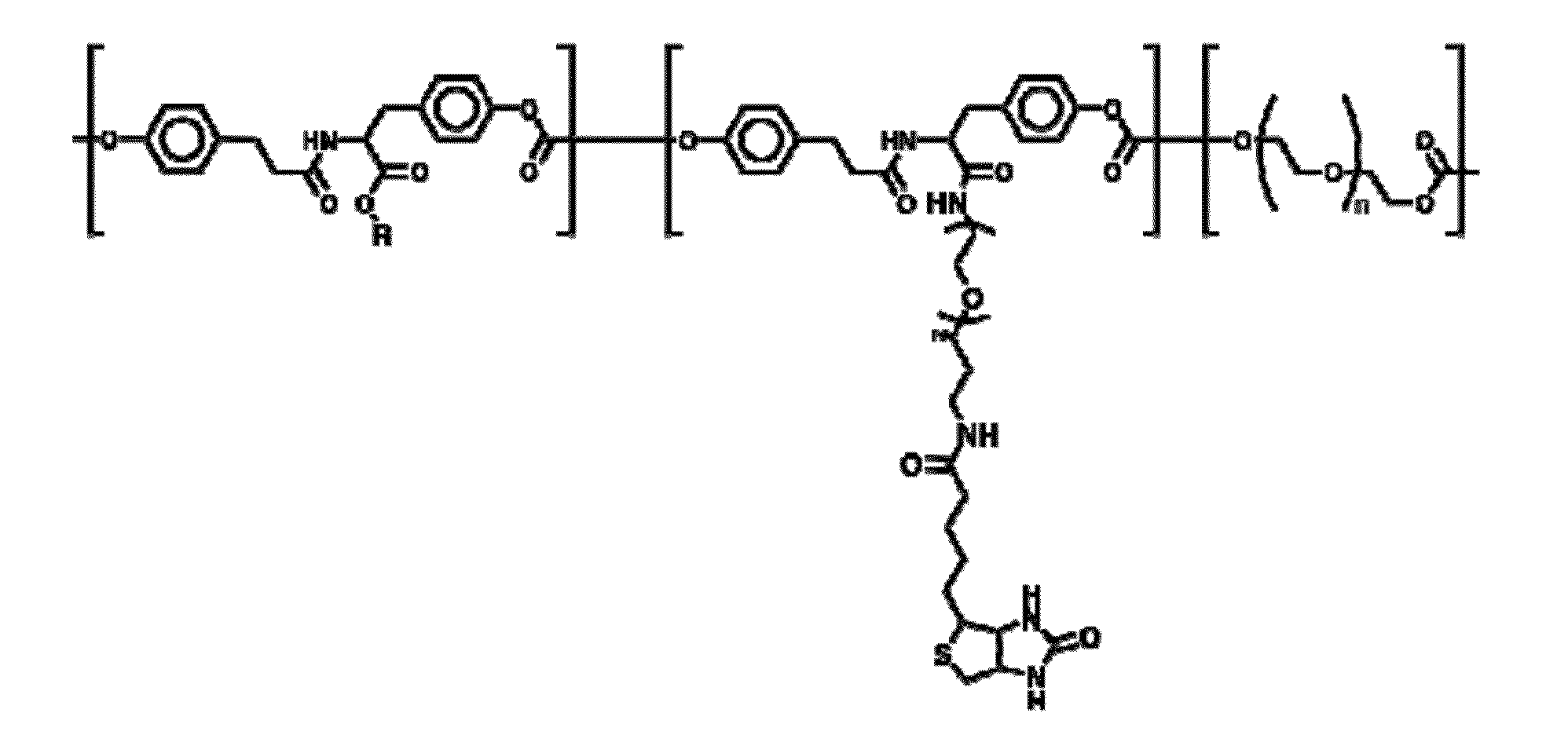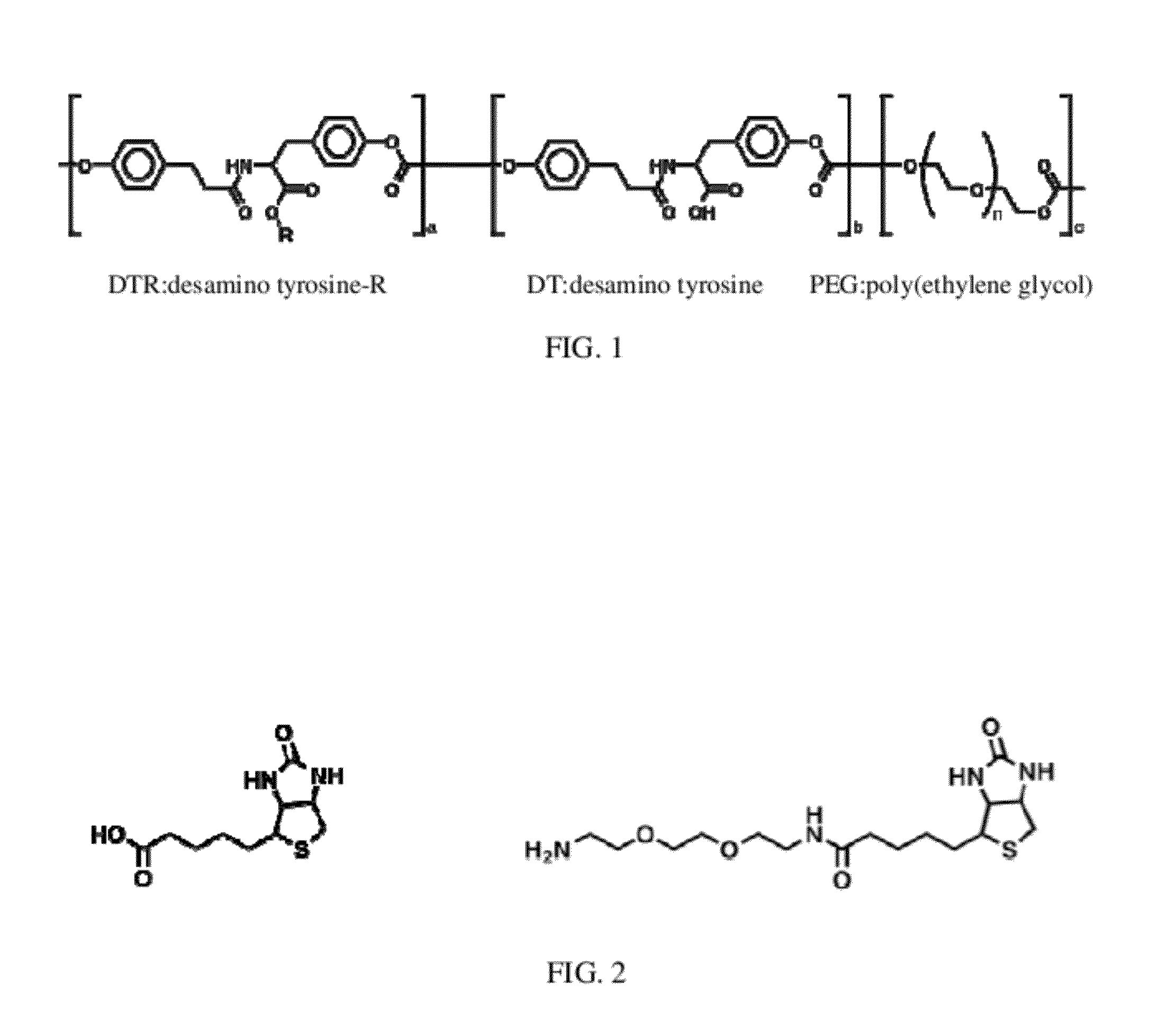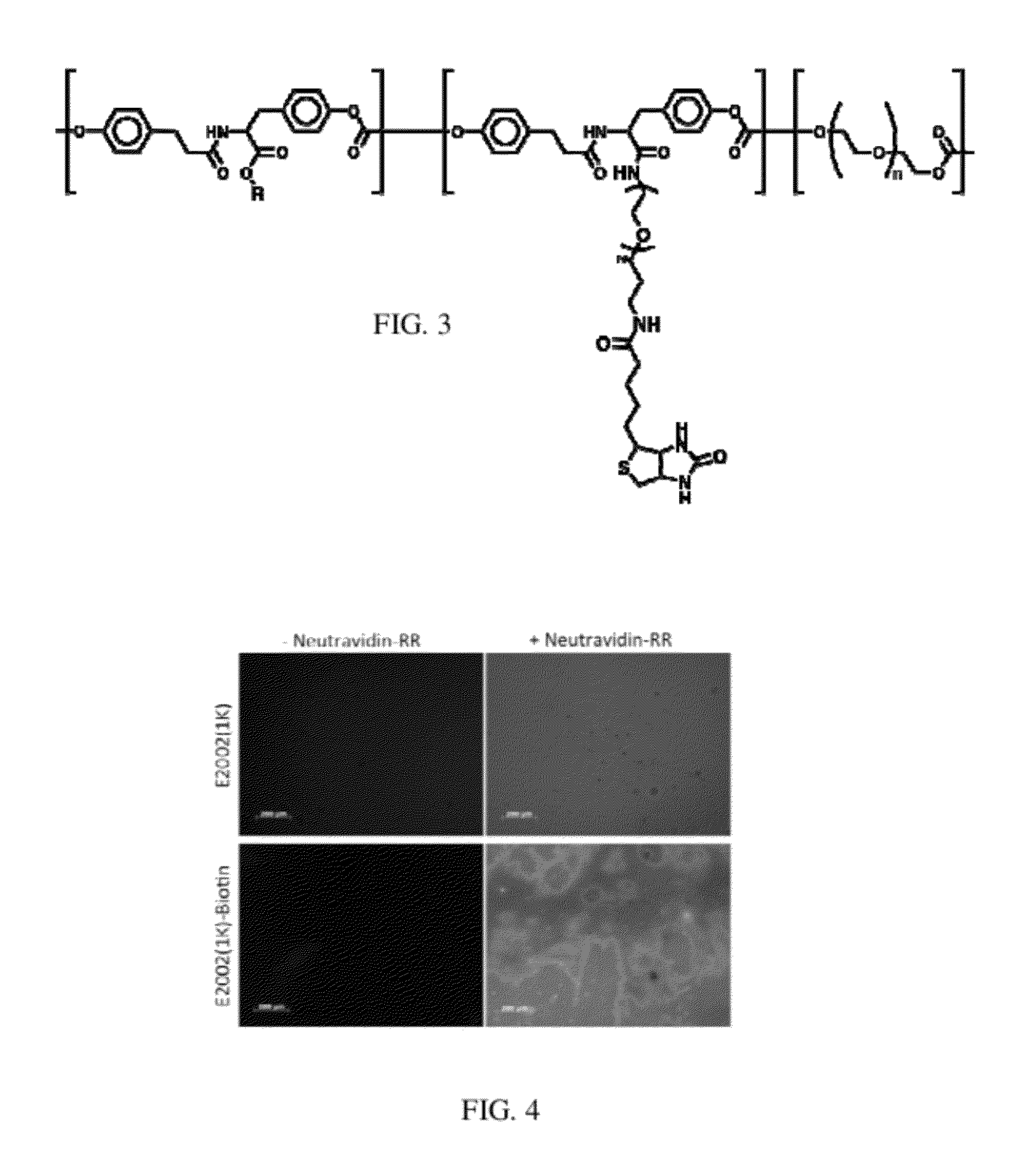Molecular Surface Design of Tyrosine-Derived Polycarbonates for Attachment of Biomolecules
a technology of tyrosine-derived polycarbonates and biomolecules, which is applied in the direction of biochemistry apparatus and processes, enzymology, and enzyme stabilisation, etc., can solve the problems of scaffold alone failing to promote bone formation throughout the defect area, lack of sufficient biological, and further injury
- Summary
- Abstract
- Description
- Claims
- Application Information
AI Technical Summary
Benefits of technology
Problems solved by technology
Method used
Image
Examples
examples
Base Polymer Synthesis:
[0086]Tyrosine-derived polycarbonates were synthesized by polycondensation reactions according to previously published procedures (R. Rojas, et al., J. Polym. Sci., Part a—Polymer Chemistry, 2009, 47, 49-58; J. Schut et al., Polymer, 2007, 48, 6115-6124). The tyrosine-derived polycarbonate used as the base polymer is actually a terpolymer composed of 3 different monomeric units (FIG. 1): desamino tyrosine-R(R=ethyl ester), desamino tyrosine, and poly(ethylene glycol).
Modification of Base Polymer with Biotin:
[0087]Numerous reaction conditions are possible for attaching linkers to the free carboxylic acid group of the DT within the terpolymer. Those here employed follow the general characteristics of:[0088]First: dissolving the terpolymer in solvent (THF or other);[0089]Second: activation of the carboxylic acid via a carbodiimide via EDC or DCC;[0090]Third: add leaving group HOBt to prime for nucleophilic attack;[0091]Fourth: addition of the nucleophile;[0092]Fi...
PUM
| Property | Measurement | Unit |
|---|---|---|
| Fraction | aaaaa | aaaaa |
| Biocompatibility | aaaaa | aaaaa |
| Molecular surface | aaaaa | aaaaa |
Abstract
Description
Claims
Application Information
 Login to View More
Login to View More - R&D
- Intellectual Property
- Life Sciences
- Materials
- Tech Scout
- Unparalleled Data Quality
- Higher Quality Content
- 60% Fewer Hallucinations
Browse by: Latest US Patents, China's latest patents, Technical Efficacy Thesaurus, Application Domain, Technology Topic, Popular Technical Reports.
© 2025 PatSnap. All rights reserved.Legal|Privacy policy|Modern Slavery Act Transparency Statement|Sitemap|About US| Contact US: help@patsnap.com



